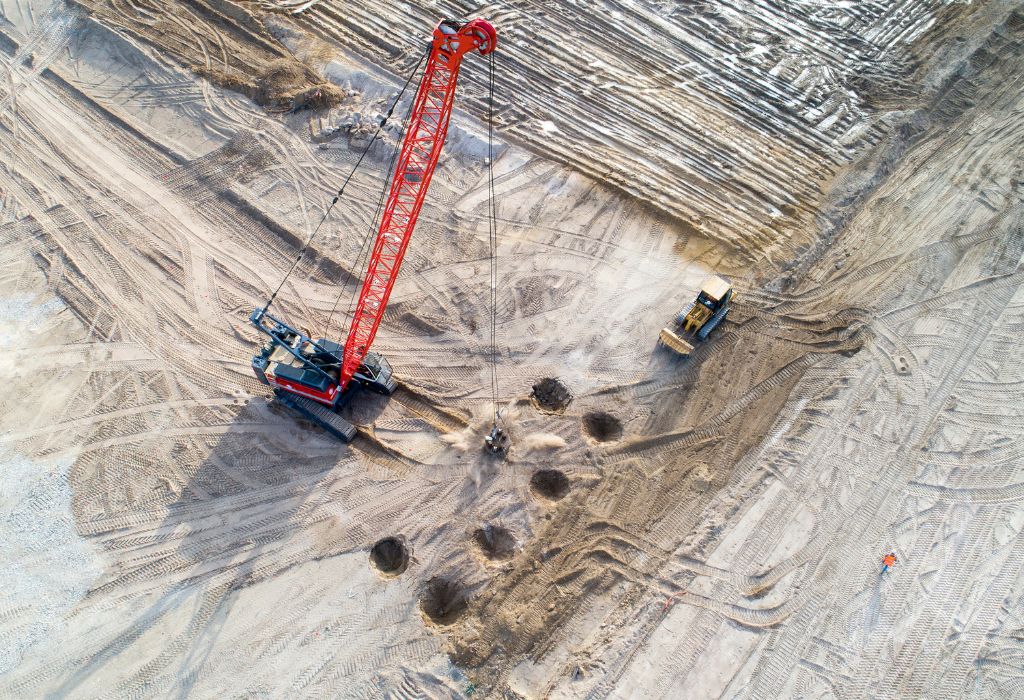DYNAMIC COMPACTION

Dynamic Compaction is an effective soil improvement technique that uses the dynamic effect of high-energy impacts to improve the density of weak soil. The process enhances the soil to a depth of 10m and is used for settlement improvement and liquefaction mitigation. Additionally, dynamic compaction is used to improve performance and backfilling landfill sites or collapsing cavities.
Uses of Dynamic Compaction:
Increase Bearing Capacity
Decrease Settlement
Mitigate Liquefaction
Avoid Major Below-ground Obstruction Removal
Advantages of Dynamic Compaction:
- Sustainable technique that requires limited material import
- Reduces the use of compressible, contaminated fills
- Minimises settlement
- Improves bearing capacity
- Helps compact a wide variety of weal soils
- Helps improve soil conditions on marginal sites without the need of piling or deep excavation on shallow foundations
Commonly Used Dynamic Compaction Techniques:
We at Savinaya, have applied dynamic compaction to various sites for different types of structures such as buildings, landfills, heavy storage, port and airport platforms.
Dynamic Compaction or Heavy Tamping
Rapid Impact Compaction (RIC)
High Energy Impact Compaction (HEIC)
FAQ's
Dynamic compaction is a ground improvement technique that involves dropping a heavy weight repeatedly on the ground surface to densify loose soil or fill material and increase its bearing capacity.
Dynamic compaction is typically used in construction projects where the soil or fill material is loose or weak, and there is a need to increase its load-bearing capacity to support heavy structures or foundations. At Savinaya Infra, we offer different ground improvement services. For details, please get in touch with us.
Dynamic compaction involves dropping a heavy weight, typically a steel plate or a ram, repeatedly on the ground surface from a predetermined height and at regular intervals. The weight of the plate or ram causes the loose soil or fill material to compact and densify, which increases its load-bearing capacity.
The benefits of dynamic compaction include increased soil density and load-bearing capacity, improved stability and settlement control, reduced risk of liquefaction, and cost-effectiveness compared to other ground improvement techniques.
The limitations of dynamic compaction include limited effectiveness on certain types of soil or fill material, the potential for damage to nearby structures or utilities, and the need for careful planning and execution to ensure proper compaction and avoid potential safety hazards.
